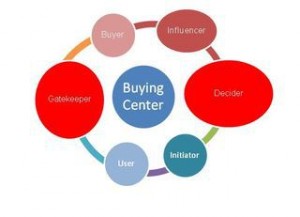
Email are an extension of the sender’s brand – they impression they convey can be strong and appealing or weak and unconvincing. Each email should be treated like a brand ambassador to build recognition, trust and response rates. On the flip side, brand means nothing if customers’ needs are ignored in how the email messages are shaped. And that means automation. When you combine brand and automation, marketers gain the power to create a relationship that lasts.
Here are some steps to bring brand and automation together for great customer response.
Brand It
A consistent brand image can increase brand loyalty and, consequently, sales. Projecting a consistent brand image via visual components such as logo and color scheme, as well as with messaging and tone will familiarize prospects and customers and build brand trust.
- Creating a series of templates lets franchises easily launch different types of campaigns / messages, such as coupons, what’s new, special offers, events, surveys and more.
- Each template should have a different layout based on the content it features – but branded consistently with consistent colors and fonts, prominent logo placement and company name in the “from” address as well.
- Optimizing emails for mobile devices such as cellphones and tablets is a must. Responsive templates ensure that emails display properly on all screen sizes for easy viewing and engagement
- Maintaining a consistent brand voice across all emails.
- Landing page design is consistent with, and complements, emails.
- Consider target’s habits in designing emails. Are they being printed and coupons brought in-store or presented as coupons on their mobile device? Are they clicking to purchase online? Or researching online, then purchasing in-store?
- Demographics provide essential clues. A target audience skewed older may warrant a larger font size. An audience with more disposable income may let feature higher-ticket items.
Automate or Perish
People are more receptive to messages that reflect their interests. When they’re considering making a purchase, they’ll be more inclined to buy. The key is email automation, and it’s effective is because it is accurate. Each triggered communication is prompted by an action or data coming directly from the person receiving the message.
Types to remember include:
- Welcome emails when someone subscribes to an email list
- A product or service trial period with sequenced emails can encourage upgrade to a paid account.
- Triggered cart abandonment emails remind online shoppers of their incomplete purchases.
- Dynamic content can tailor a national email template with a different promotional offer for each franchise location.
- Landing pages and forms can trigger an email stream based on visitor preferences.
- Replenish and repurchase emails can be triggered automatically for product or services with a usage or repair lifecycle.
Maximizing Automation
- Strategy is essential to make automation pay off. Defining goals and the type of email remarketing campaigns to implement is a must. Cart abandonment reminders? Purchase association emails? Benefit-driven landing pages and triggers? Welcome emails? Product trial upgrade emails? Requests for consumer reviews?
- The next step is planning. Once goals are clear, it’s time to determine triggers for the emails – information that will be captured for timely, personal emails later. Cart abandonment can be addressed by test emailing a few hours after, then a day later if needed. Second emails often lift conversions considerably. Also, during a product trial, test-sending feature and benefit-driven emails throughout the trial cycle can yield valuable information.
- Segmented lists make automation particularly effective, particularly for franchises. When a nationwide event is being promoted, emails deployed according to the date/time for each location can be automated, including locations-specific information such as address and phone number. Then the offer can be tweaked to include location-specific details such as special appearances and more.
The Bottom Line
A smart-branded approach to email lets marketers safely centralize control of their organization’s identity and impact while automation driving more opens, more customer engagement, and more business. Whether it’s a large franchise or a smaller operation looking for maximum audience penetration, leveraging the power of brand and automation lets these marketers tailor email communications for each audience – messages that are on-target, trusted and drive response.
Learn more about centralized marketing and the other ways agencies can put the power of email marketing to work for their clients — read StreamSend’s Agency Email Marketing Guide.
Digital & Social Articles on Business 2 Community(28)
Report Post





